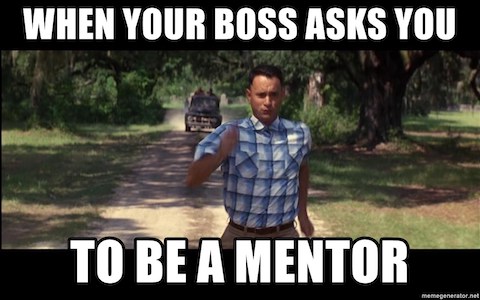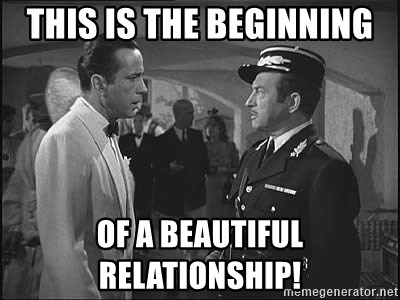Mentoring work starts when you learn a better way of doing things from someone you trust.
You might learn how to teach someone else what you’e learned.
Mentorship says, “If you can do it, show others how it’s done.”
Let’s go:
The most important part of mentoring work is attitude.
More specifically, an overbearing attitude.
For instance, being a mentor isn’t the same as being a contractor.
Ask a pro contractor you hire if they need your help and you might get this:
“I charge $75.00 an hour. With your help I charge $100.00 an hour.”
The not so hidden meaning? ‘Stay out of the way.’
The Secret Of Effective Mentoring Work
If being a good listener is a secret, it’s because you don’t do it.
And, if that’s the case, and you want to learn how to be a good listener, start slow.
I have pals who talk and listen at the same time. Once we settle into the routine it’s a wild ride of call and response.
But, try that with an authority figure, or someone used to doing all of the talking, and communication comes to a standstill.
If you’re on the phone with these guys and it feels like they want to talk, then hangup, you’re on the right wavelength.
Their wavelength.
People with a message who stay on message get lost when the questions start.
Like dinnertime with company growing up, you sit at the table, eat everything on your plate, and keep quiet.
In other words, follow orders to completion and stand-by for more of the same.
The secret to effective mentoring work is setting up the other person for their own revelations.
As a mentor, you know it’s coming.
Examples Of Accidental Mentoring
A married couple join a local winery.
Membership includes a quarterly wine pick up. If you don’t pick it up, they ship it.
“We’ve got more wine, and good wine, then we’ve ever had.”
“It makes a good gift.”
“Maybe we ought drink it?”
“It’s so expensive.”
“So you’ve got to ask, ‘Am I worth it?'”
“I think I’ll have a glass of wine tonight.”
“Good idea. You’re worth it. To show how much I believe you’re worth it, I won’t butt in and pour a huge glass and chug it down to an acceptable level in the glass when you’re not looking.”
“You’d do that for me?”
“Even more, I’ll let it go flat in the fridge to where you don’t want it, then use it for cooking like cheap sherry.”
“What?”
“You can even spritz it up with seltzer water and ice cubes and turn expensive wine into a wine-cooler and you won’t hear a word from me.”
“I wouldn’t do that.”
Mentoring The Wall
Say you want to hang something heavy from a wall in your house.
It’s not a problem until it’s a weight rack that will crush you if you don’t do it right.
The directions say it must be anchored into the studs in the wall for safety.
Again, no problem unless you find plywood behind the sheetrock and can’t find studs measured sixteen inches on center.
Big wall anchor butterflies require big holes in the wall, which brings the question: Is this worth all the trouble of installing, then patching and painting later when it’s taken down?
How can a wall be supported by plywood and no studs? The answer is: It can’t.
The stud finder says no studs?
A new deep scan stud finder makes contact.
There are studs placed at sixteen inches on center behind the plywood after all. They correspond to all of the test holes drilled to find them.
No butterfly anchors with big holes and questionable safety needed, but what if the floor isn’t level?
Mentoring is a process with chances to quit at each new challenge. It works best with people who don’t quit.
First the wall challenge, now the floor?
You could build a platform to level the whole deal.
Or you could shim the downslope side for ground contact.
Like the wall, go over every possible alternative instead of pounding it together and wondering why it doesn’t work, why it’s crooked, why it’s falling down.
If a plan proceeds from step one, to step two, then step three, review the plan for continuity.
Is it 1, 2, 3? Is it 2, 1, 3?
Mentoring work requires the ability to self-correct without blaming others.
Most important of all, the work requires the mentor to recognize when the tables are turned.
When mentee turns into mentor, and the mentor accepts the new role, it’s the beginning of a beautiful relationship.




